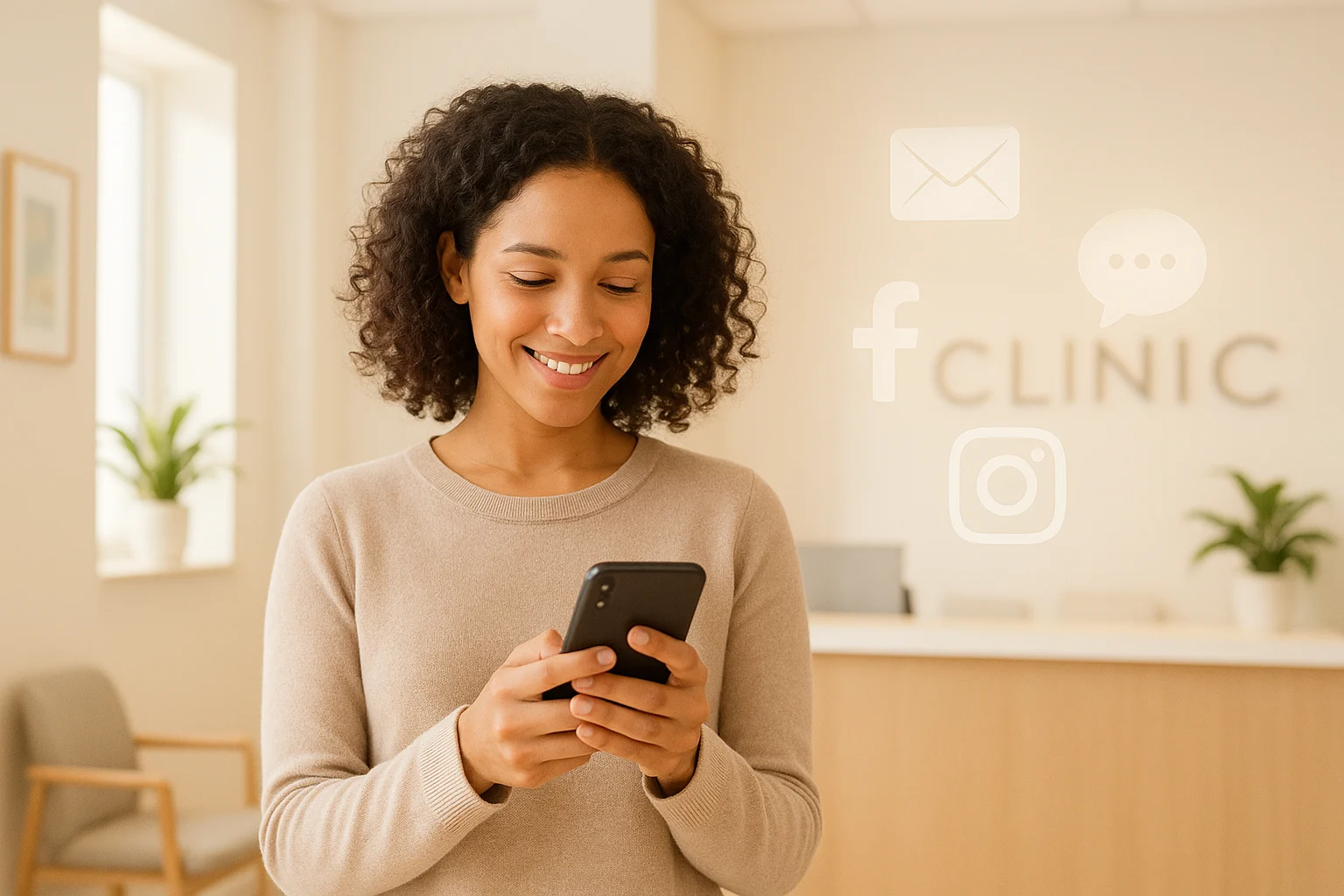How to Set Up an Automated Marketing Campaign That Keeps Patients Engaged and Aids Recovery
By Bruce Klaic (MBA) - Head of Marketing Friday, August 15, 2025

When it comes to patient communication, 78% of people prefer email, 41% like SMS, 27% follow social media, and only 22% read blogs. If you’re only posting on Facebook, you’re missing most of your audience — and potentially missing chances to keep them informed and supported.
The truth is, each channel plays a different role:
- Email builds deeper engagement.
- Social boosts awareness.
- SMS delivers urgent updates.
When you combine them in a smart, automated system, you can keep patients engaged through their recovery journey — without piling extra admin work on your plate.\
1. Email – Your Engagement Workhorse
Email is still the most reliable way to connect with patients beyond the clinic.
- Best for: Detailed advice, treatment education, and post-appointment follow-ups.
- Why it works: People check email when they have time to read and absorb information.
- How to automate it: Schedule a “post-treatment care” email to send automatically after each appointment. Include practical recovery tips, links to further resources, and reassurance about what’s normal in the healing process.
This kind of communication deepens trust, reinforces your advice, and supports better outcomes.
2. SMS – Short, Timely, and Action-Ready
Sometimes, patients need to know something now. That’s where SMS shines.
- Best for: Appointment reminders, urgent updates, last-minute schedule changes.
- Why it works: Open rates for SMS are often over 90%, and most people read messages within minutes.
- How to automate it: Set reminders to go out 24 hours before an appointment, or send a quick “we’ve had a cancellation” text to patients waiting for earlier slots.
The key is brevity: one clear message, one clear action.
3. Social Media – Awareness and Connection
Social isn’t the place for detailed treatment instructions, but it’s brilliant for keeping your clinic visible and approachable.
- Best for: Sharing quick health tips, showing behind-the-scenes moments, celebrating patient milestones (with consent!), and promoting community events.
- Why it works: Patients feel more connected when they see your clinic’s personality, not just your professional advice.
- How to integrate it: Use social to drive people to your website or email list for deeper resources.
Think of social as your friendly wave from across the street — not the full conversation.
4. Building Your Automated Patient Engagement System
Here’s the framework:
Map the Patient Journey
- New patient welcome
- Pre-treatment preparation
- Post-treatment care
- Long-term check-ins
Create Content for Each Stage
- Educational emails for advice and follow-up
- Short SMS for reminders and updates
- Light, engaging social posts for community building
Use Automation Tools
- Platforms like Mailchimp, HubSpot, or Cliniko integrations can send the right message at the right time.
- Set it once, and it runs in the background.
Measure and Adjust
- Track open rates, click rates, and patient responses.
- Refine your timing, wording, or topics based on what works best.
Pro Tips for Compliance & Engagement
- Keep all content educational and factual — avoid promising specific outcomes.
- Personalise with patient names where appropriate for a warmer touch.
- Segment patients so they receive only relevant content (e.g., sports injury tips for athletes, mobility advice for older patients).
Combining email, SMS, and social media in an automated system means your patients stay informed, supported, and connected throughout their recovery — without you or your team spending hours chasing messages.
Want an automated patient communication system that runs itself and builds stronger relationships? We can help you set it up so every patient gets the right message at the right time.


